

Case Study: How does Japan live with earthquakes?
Japan lies within one of the most tectonically active zones in the world. It experiences over 400 earthquakes every day. The majority of these are not felt by humans and are only detected by instruments. Japan has been hit by a number of high-intensity earthquakes in the past. Since 2000 there are have been 16000 fatalities as the result of tectonic activity.
Japan is located on the Pacific Ring of Fire, where the North American, Pacific, Eurasian and Philippine plates come together. Northern Japan is on top of the western tip of the North American plate. Southern Japan sits mostly above the Eurasian plate. This leads to the formation of volcanoes such as Mount Unzen and Mount Fuji. Movements along these plate boundaries also present the risk of tsunamis to the island nation. The Pacific Coastal zone, on the east coast of Japan, is particularly vulnerable as it is very densely populated.
The 2011 Japan Earthquake: Tōhoku
Japan experienced one of its largest seismic events on March 11 2011. A magnitude 9.0 earthquake occurred 70km off the coast of the northern island of Honshu where the Pacific and North American plate meet. It is the largest recorded earthquake to hit Japan and is in the top five in the world since records began in 1900. The earthquake lasted for six minutes.
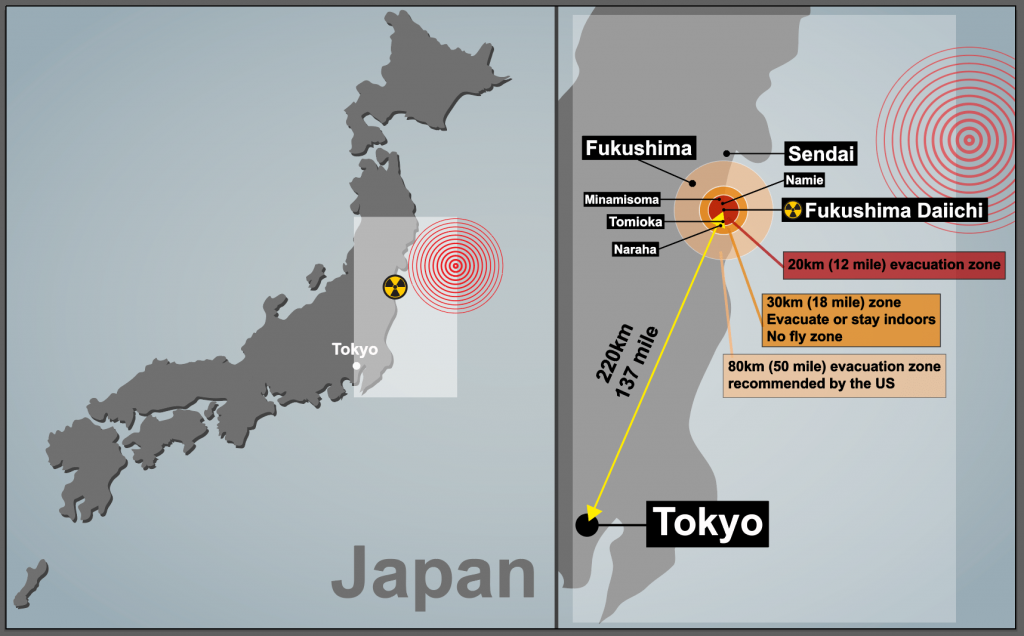
A map to show the location of the 2011 Japan Earthquake
The earthquake had a significant impact on the area. The force of the megathrust earthquake caused the island of Honshu to move east 2.4m. Parts of the Japanese coastline dr[[ed by 60cm. The seabed close to the focus of the earthquake rose by 7m and moved westwards between 40-50m. In addition to this, the earthquake shifted the Earth 10-15cm on its axis.
The earthquake triggered a tsunami which reached heights of 40m when it reached the coast. The tsunami wave reached 10km inland in some places.
What were the social impacts of the Japanese earthquake in 2011?
The tsunami in 2011 claimed the lives of 15,853 people and injured 6023. The majority of the victims were over the age of 60 (66%). 90% of the deaths was caused by drowning. The remaining 10% died as the result of being crushed in buildings or being burnt. 3282 people were reported missing, presumed dead.
Disposing of dead bodies proved to be very challenging because of the destruction to crematoriums, morgues and the power infrastructure. As the result of this many bodies were buried in mass graves to reduce the risk of disease spreading.
Many people were displaced as the result of the tsunami. According to Save the Children 100,000 children were separated from their families. The main reason for this was that children were at school when the earthquake struck. In one elementary school, 74 of 108 students and 10 out of 13 staff lost their lives.
More than 333000 people had to live in temporary accommodation. National Police Agency of Japan figures shows almost 300,000 buildings were destroyed and a further one million damaged, either by the quake, tsunami or resulting fires. Almost 4,000 roads, 78 bridges and 29 railways were also affected. Reconstruction is still taking place today. Some communities have had to be relocated from their original settlements.
What were the economic impacts of the Japanese earthquake in 2011?
The estimated cost of the earthquake, including reconstruction, is £181 billion. Japanese authorities estimate 25 million tonnes of debris were generated in the three worst-affected prefectures (counties). This is significantly more than the amount of debris created during the 2010 Haiti earthquake. 47,700 buildings were destroyed and 143,300 were damaged. 230,000 vehicles were destroyed or damaged. Four ports were destroyed and a further 11 were affected in the northeast of Japan.
There was a significant impact on power supplies in Japan. 4.4 million households and businesses lost electricity. 11 nuclear reactors were shut down when the earthquake occurred. The Fukushima Daiichi nuclear power plant was decommissioned because all six of its reactors were severely damaged. Seawater disabled the plant’s cooling systems which caused the reactor cores to meltdown, leading to the release of radioactivity. Radioactive material continues to be released by the plant and vegetation and soil within the 30km evacuation zone is contaminated. Power cuts continued for several weeks after the earthquake and tsunami. Often, these lasted between 3-4 hours at a time. The earthquake also had a negative impact on the oil industry as two refineries were set on fire during the earthquake.
Transport was also negatively affected by the earthquake. Twenty-three train stations were swept away and others experienced damage. Many road bridges were damaged or destroyed.
Agriculture was affected as salt water contaminated soil and made it impossible to grow crops.
The stock market crashed and had a negative impact on companies such as Sony and Toyota as the cost of the earthquake was realised. Production was reduced due to power cuts and assembly of goods, such as cars overseas, were affected by the disruption in the supply of parts from Japan.
What were the political impacts of the Japanese earthquake in 2011?
Government debt was increased when it injects billions of yen into the economy. This was at a time when the government were attempting to reduce the national debt.
Several years before the disaster warnings had been made about the poor defences that existed at nuclear power plants in the event of a tsunami. A number of executives at the Fukushima power plant resigned in the aftermath of the disaster. A movement against nuclear power, which Japan heavily relies on, developed following the tsunami.
The disaster at Fukushima added political weight in European countries were anti-nuclear bodies used the event to reinforce their arguments against nuclear power.
Privacy Overview
Pin it on pinterest.
You must be logged in to post a comment.
Skip to content
Get Revising
Join get revising, already a member, case study: tohoku.
- Created by: Jamie Grainger
- Created on: 11-04-17 22:07
CASE STUDY: TOHOKU, JAPAN (MEDC)
- 11th March, 2011
- 9.0 on the Richter scale
- 100km east of Sendai
- 3000km of coastline affected
- Lasted 6 mintues, plus couple of afterschocks.
- Destructive plate margin where the Pacific plate was being subducted by the North Amercian.
- A segment of rock around 200km long slipped and flicked upwards by 10m.
- Sudden uplift at the boundary caused tsunami.
- East edge of the Eurasian plate.
Social impacts:
- 2000 people killed
- Electricity lost in 6 million homes
- 1 million had no running water
- Natural hazards
No comments have yet been made
Similar Geography resources:
tectonics case studies!! 0.0 / 5
Tectonics Revision List 0.0 / 5
tectonic activity and hazards 0.0 / 5
Unit 4 tectonics pre release case study cards 4.0 / 5 based on 6 ratings
Tectonics 4.5 / 5 based on 2 ratings
Plate Tectonics 5 5.0 / 5 based on 1 rating
Tectonics 5.0 / 5 based on 1 rating
CBD Watford High Street Regeneration 0.0 / 5
Plate Tectonics 4 1.0 / 5 based on 1 rating
Case Study: Boxing day tsunami 0.0 / 5
Related discussions on The Student Room
- AQA A Level Geography Paper 1 (7037/1) - 17th May 2023 [Exam Chat] »
- Do you get 0 marks for not using a local place in an essay question »
- Edexcel A level Geography (2016) Notes »
- Eduqas A-level Geography Component 1 (A110U10-1) - 17th May 2023 [Exam Chat] »
- case studies for ocr gcse geography b »
- OCR A-Level Geography Geographical Debates | [12th June 2023] Exam Chat »
- A-level Geography Study Group 2022-2023 »
- 2023 HKCCCSLM Acts100 Japan mission - I'm off again! »
- Edexcel A-Level Geography Paper 1 | [17th May 2023] Exam Chat »
- Alevel geography hazard 20 marker »
Case Study: Japan 2010 Tsunami
Impacts of the japan earthquake in 2011.
Japan is a developed country in east Asia. Japan's geography is dominated by islands. The country is a high-risk area for tectonic hazards.
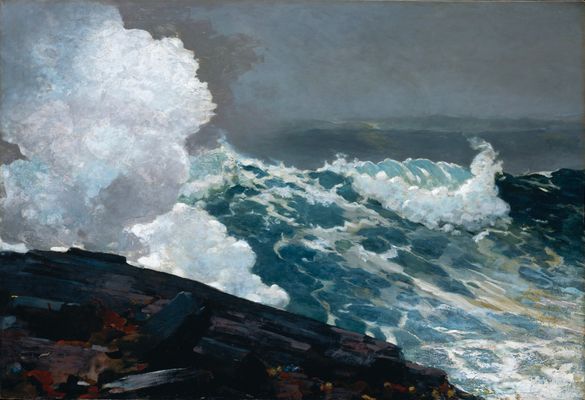
What caused the 2011 Japan tsunami?
- There was an earthquake with a magnitude of 9.0 in northeast Japan on the 11th March 2011.
- The earthquake is known as the Tohoku earthquake.
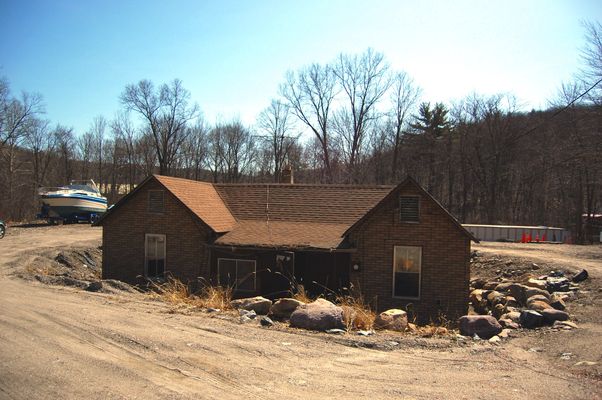
Primary impacts
- 1 million buildings were damaged and over 120,000 buildings were completely destroyed.
- Many buildings sunk into the ground because of liquefaction, which is when waterlogged soil acts like a liquid.
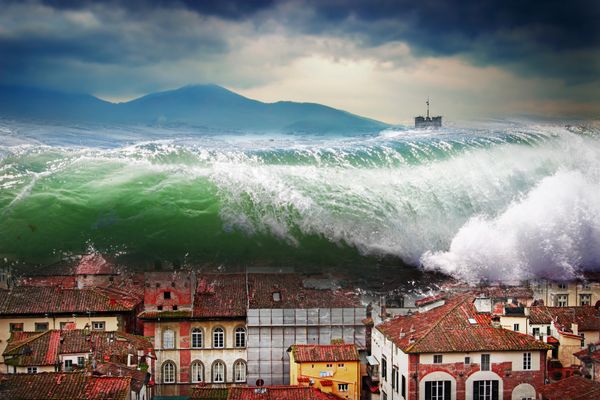
Secondary impacts
- The tsunami that was caused by the earthquake caused thousands of deaths (it is hard to know how many people died in the earthquake or the tsunami and lots of people are still missing).
- More than 150,000 people became homeless and in 2017, 6 years on, 50,000 people still had no homes.
- The tsunami damaged the Fukushima nuclear power station. Electricity could no longer reach Fukushima and there was a nuclear meltdown at the plant, releasing toxic nuclear waste into the local area.
- Railways lines were destroyed by the tsunami.

Long-term impact and response
- Economists estimate that the total damage done by the earthquake and tsunami is $200 bn. This is the largest amount of damage caused by any natural disaster ever.
- Japan was a high income country and had a new tsunami warning system. But, studies suggest that only 58% paid any attention to the tsunami warning.
- In the 12 months after the Tohoku earthquake, there were 5,000 aftershocks in Japan.
1 Geography Skills
1.1 Mapping
1.1.1 Map Making
1.1.2 OS Maps
1.1.3 Grid References
1.1.4 Contour Lines
1.1.5 Symbols, Scale and Distance
1.1.6 Directions on Maps
1.1.7 Describing Routes
1.1.8 Map Projections
1.1.9 Aerial & Satellite Images
1.1.10 Using Maps to Make Decisions
1.2 Geographical Information Systems
1.2.1 Geographical Information Systems
1.2.2 How do Geographical Information Systems Work?
1.2.3 Using Geographical Information Systems
1.2.4 End of Topic Test - Geography Skills
2 Geology of the UK
2.1 The UK's Rocks
2.1.1 The UK's Main Rock Types
2.1.2 The UK's Landscape
2.1.3 Using Rocks
2.1.4 Weathering
2.2 Case Study: The Peak District
2.2.1 The Peak District
2.2.2 Limestone Landforms
2.2.3 Quarrying
3 Geography of the World
3.1 Geography of America & Europe
3.1.1 North America
3.1.2 South America
3.1.3 Europe
3.1.4 The European Union
3.1.5 The Continents
3.1.6 The Oceans
3.1.7 Longitude
3.1.8 Latitude
3.1.9 End of Topic Test - Geography of the World
4 Development
4.1 Development
4.1.1 Classifying Development
4.1.3 Evaluation of GDP
4.1.4 The Human Development Index
4.1.5 Population Structure
4.1.6 Developing Countries
4.1.7 Emerging Countries
4.1.8 Developed Countries
4.1.9 Comparing Development
4.2 Uneven Development
4.2.1 Consequences of Uneven Development
4.2.2 Physical Factors Affecting Development
4.2.3 Historic Factors Affecting Development
4.2.4 Human & Social Factors Affecting Development
4.2.5 Breaking Out of the Poverty Cycle
4.3 Case Study: Democratic Republic of Congo
4.3.1 The DRC: An Overview
4.3.2 Political & Social Factors Affecting Development
4.3.3 Environmental Factors Affecting the DRC
4.3.4 The DRC: Aid
4.3.5 The Pros & Cons of Aid in DRC
4.3.6 Top-Down vs Bottom-Up in DRC
4.3.7 The DRC: Comparison with the UK
4.3.8 The DRC: Against Malaria Foundation
4.4 Case Study: Nigeria
4.4.1 The Importance & Development of Nigeria
4.4.2 Nigeria's Relationships with the Rest of the World
4.4.3 Urban Growth in Lagos
4.4.4 Population Growth in Lagos
4.4.5 Factors influencing Nigeria's Growth
4.4.6 Nigeria: Comparison with the UK
5 Weather & Climate
5.1 Weather
5.1.1 Weather & Climate
5.1.2 Components of Weather
5.1.3 Temperature
5.1.4 Sunshine, Humidity & Air Pressure
5.1.5 Cloud Cover
5.1.6 Precipitation
5.1.7 Convectional Precipitation
5.1.8 Frontal Precipitation
5.1.9 Relief or Orographic Precipitation
5.1.10 Wind
5.1.11 Extreme Wind
5.1.12 Recording the Weather
5.1.13 Extreme Weather
5.2 Climate
5.2.1 Climate of the British Isles
5.2.2 Comparing Weather & Climate London
5.2.3 Climate of the Tropical Rainforest
5.2.4 End of Topic Test - Weather & Climate
5.3 Tropical Storms
5.3.1 Formation of Tropical Storms
5.3.2 Features of Tropical Storms
5.3.3 The Structure of Tropical Storms
5.3.4 Tropical Storms Case Study: Katrina Effects
5.3.5 Tropical Storms Case Study: Katrina Responses
6 The World of Work
6.1 Tourism
6.1.1 Landscapes
6.1.2 The Growth of Tourism
6.1.3 Benefits of Tourism
6.1.4 Economic Costs of Tourism
6.1.5 Social, Cultural & Environmental Costs of Tourism
6.1.6 Tourism Case Study: Blackpool
6.1.7 Ecotourism
6.1.8 Tourism Case Study: Kenya
7 Natural Resources
7.1.1 What are Rocks?
7.1.2 Types of Rock
7.1.4 The Rock Cycle - Weathering
7.1.5 The Rock Cycle - Erosion
7.1.6 What is Soil?
7.1.7 Soil Profiles
7.1.8 Water
7.1.9 Global Water Demand
7.2 Fossil Fuels
7.2.1 Introduction to Fossil Fuels
7.2.2 Fossil Fuels
7.2.3 The Global Energy Supply
7.2.5 What is Peak Oil?
7.2.6 End of Topic Test - Natural Resources
8.1 River Processes & Landforms
8.1.1 Overview of Rivers
8.1.2 The Bradshaw Model
8.1.3 Erosion
8.1.4 Sediment Transport
8.1.5 River Deposition
8.1.6 River Profiles: Long Profiles
8.1.7 River Profiles: Cross Profiles
8.1.8 Waterfalls & Gorges
8.1.9 Interlocking Spurs
8.1.10 Meanders
8.1.11 Floodplains
8.1.12 Levees
8.1.13 Case Study: River Tees
8.2 Rivers & Flooding
8.2.1 Flood Risk Factors
8.2.2 Flood Management: Hard Engineering
8.2.3 Flood Management: Soft Engineering
8.2.4 Flooding Case Study: Boscastle
8.2.5 Flooding Case Study: Consequences of Boscastle
8.2.6 Flooding Case Study: Responses to Boscastle
8.2.7 Flooding Case Study: Bangladesh
8.2.8 End of Topic Test - Rivers
8.2.9 Rivers Case Study: The Nile
8.2.10 Rivers Case Study: The Mississippi
9.1 Formation of Coastal Landforms
9.1.1 Weathering
9.1.2 Erosion
9.1.3 Headlands & Bays
9.1.4 Caves, Arches & Stacks
9.1.5 Wave-Cut Platforms & Cliffs
9.1.6 Waves
9.1.7 Longshore Drift
9.1.8 Coastal Deposition
9.1.9 Spits, Bars & Sand Dunes
9.2 Coast Management
9.2.1 Management Strategies for Coastal Erosion
9.2.2 Case Study: The Holderness Coast
9.2.3 Case Study: Lyme Regis
9.2.4 End of Topic Test - Coasts
10 Glaciers
10.1 Overview of Glaciers & How They Work
10.1.1 Distribution of Glaciers
10.1.2 Types of Glaciers
10.1.3 The Last Ice Age
10.1.4 Formation & Movement of Glaciers
10.1.5 Shaping of Landscapes by Glaciers
10.1.6 Glacial Landforms Created by Erosion
10.1.7 Glacial Till & Outwash Plain
10.1.8 Moraines
10.1.9 Drumlins & Erratics
10.1.10 End of Topic Tests - Glaciers
10.1.11 Tourism in Glacial Landscapes
10.1.12 Strategies for Coping with Tourists
10.1.13 Case Study - Lake District: Tourism
10.1.14 Case Study - Lake District: Management
11 Tectonics
11.1 Continental Drift & Plate Tectonics
11.1.1 The Theory of Plate Tectonics
11.1.2 The Structure of the Earth
11.1.3 Tectonic Plates
11.1.4 Plate Margins
11.2 Volcanoes
11.2.1 Volcanoes & Their Products
11.2.2 The Development of Volcanoes
11.2.3 Living Near Volcanoes
11.3 Earthquakes
11.3.1 Overview of Earthquakes
11.3.2 Consequences of Earthquakes
11.3.3 Case Study: Christchurch, New Zealand Earthquake
11.4 Tsunamis
11.4.1 Formation of Tsunamis
11.4.2 Case Study: Japan 2010 Tsunami
11.5 Managing the Risk of Volcanoes & Earthquakes
11.5.1 Coping With Earthquakes & Volcanoes
11.5.2 End of Topic Test - Tectonics
12 Climate Change
12.1 The Causes & Consequences of Climate Change
12.1.1 Evidence for Climate Change
12.1.2 Natural Causes of Climate Change
12.1.3 Human Causes of Climate Change
12.1.4 The Greenhouse Effect
12.1.5 Effects of Climate Change on the Environment
12.1.6 Effects of Climate Change on People
12.1.7 Climate Change Predictions
12.1.8 Uncertainty About Future Climate Change
12.1.9 Mitigating Against Climate Change
12.1.10 Adapting to Climate Change
12.1.11 Case Study: Bangladesh
13 Global Population & Inequality
13.1 Global Populations
13.1.1 World Population
13.1.2 Population Structure
13.1.3 Ageing Populations
13.1.4 Youthful Populations
13.1.5 Population Control
13.1.6 Mexico to USA Migration
13.1.7 End of Topic Test - Development & Population
14 Urbanisation
14.1 Urbanisation
14.1.1 Rural Characterisitcs
14.1.2 Urban Characteristics
14.1.3 Urbanisation Growth
14.1.4 The Land Use Model
14.1.5 Rural-Urban Pull Factors
14.1.6 Rural-Urban Push Factors
14.1.7 The Impacts of Migration
14.1.8 Challenges of Urban Areas in Developed Countries
14.1.9 Challenges of Urban Areas in Developing Countries
14.1.10 Urban Sustainability
14.1.11 Case Study: China's Urbanisation
14.1.12 Major UK Cities
14.1.13 Urbanisation in the UK
14.1.14 End of Topic Test- Urbanisation
14.1.15 End of Topic Test - Urban Issues
15 Ecosystems
15.1 The Major Biomes
15.1.1 Distribution of Major Biomes
15.1.2 What Affects the Distribution of Biomes?
15.1.3 Biome Features: Tropical Forests
15.1.4 Biome Features: Temperate Forests
15.1.5 Biome Features: Tundra
15.1.6 Biome Features: Deserts
15.1.7 Biome Features: Tropical Grasslands
15.1.8 Biome Features: Temperate Grasslands
15.2 Case Study: The Amazon Rainforest
15.2.1 Interdependence of Rainforest Ecosystems
15.2.2 Nutrient Cycling in Tropical Rainforests
15.2.3 Deforestation in the Amazon
15.2.4 Impacts of Deforestation in the Amazon
15.2.5 Protecting the Amazon
15.2.6 Adaptations of Plants to Rainforests
15.2.7 Adaptations of Animals to Rainforests
16 Life in an Emerging Country
16.1 Case Studies
16.1.1 Mumbai: Opportunities
16.1.2 Mumbai: Challenges
17 Analysis of Africa
17.1 Africa
17.1.1 Desert Biomes in Africa
17.1.2 The Semi-Desert Biome
17.1.3 The Savanna Biome
17.1.4 Overview of Tropical Rainforests
17.1.5 Colonisation History
17.1.6 Population Distribution in Africa
17.1.7 Economic Resources in Africa
17.1.8 Urbanisation in Africa
17.1.9 Africa's Location
17.1.10 Physical Geography of Africa
17.1.11 Desertification in Africa
17.1.12 Reducing the Risk of Desertification
17.1.13 Case Study: The Sahara Desert - Opportunities
17.1.14 Case Study: The Sahara Desert - Development
18 Analysis of India
18.1 India - Physical Geography
18.1.1 Geographical Location of India
18.1.2 Physical Geography of India
18.1.3 India's Climate
18.1.4 Natural Disasters in India
18.1.5 Case Study: The Thar Desert
18.1.6 Case Study: The Thar Desert - Challenges
18.2 India - Human Geography
18.2.1 Population Distribution in India
18.2.2 Urabinsation in India
18.2.3 The History of India
18.2.4 Economic Resources in India
19 Analysis of the Middle East
19.1 The Middle East
19.1.1 Physical Geography of the Middle East
19.1.2 Human Geography of the Middle East
19.1.3 Climate Zones in the Middle East
19.1.4 Climate Comparison with the UK
19.1.5 Oil & Natural Gas in the Middle East
19.1.6 Water in the Middle East
19.1.7 Population of the Middle East
19.1.8 Development Case Studies: The UAE
19.1.9 Development Case Studies: Yemen
19.1.10 Supporting Development in Yemen
19.1.11 Connection to the UK
19.1.12 Importance of Oil
19.1.13 Oil & Tourism in the UAE
20 Analysis of Bangladesh
20.1 Bangladesh Physical Geography
20.1.1 Location of Bangladesh
20.1.2 Climate of Bangladesh
20.1.3 Rivers in Bangladesh
20.1.4 Flooding in Bangladesh
20.2 Bangladesh Human Geography
20.2.1 Population Structure in Bangladesh
20.2.2 Urbanisation in Bangladesh
20.2.3 Bangladesh's Economy
20.2.4 Energy & Sustainability in Bangladesh
21 Analysis of Russia
21.1 Russia's Physical Geography
21.1.1 Russia's Climate
21.1.2 Russia's Landscape
21.2 Russia's Human Geography
21.2.1 Population of Russia
21.2.2 Russia's Economy
21.2.3 Energy & Sustainability in Russia
Jump to other topics

Unlock your full potential with GoStudent tutoring
Affordable 1:1 tutoring from the comfort of your home
Tutors are matched to your specific learning needs
30+ school subjects covered
Formation of Tsunamis
Coping With Earthquakes & Volcanoes
- International
- Schools directory
- Resources Jobs Schools directory News Search
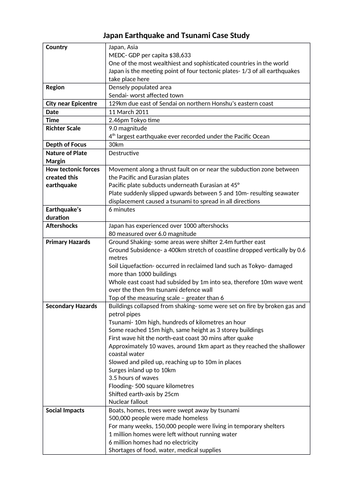

A-Level Japan Earthquake/Tsunami Case Study
Subject: Geography
Age range: 16+
Resource type: Assessment and revision
Last updated
23 June 2020
- Share through email
- Share through twitter
- Share through linkedin
- Share through facebook
- Share through pinterest

Full of Facts, Causes, Impacts and Responses! Can be used for short, long and essay questions! Great for Teachers and Students!
Tes paid licence How can I reuse this?
Get this resource as part of a bundle and save up to 17%
A bundle is a package of resources grouped together to teach a particular topic, or a series of lessons, in one place.
A-Level Earthquake Case Studies
Range of Case Studies from LEDCs and MEDCs Full of Facts, Causes, Impacts and Responses! Can be used for short, long and essay questions! Great for Teachers and Students!
Your rating is required to reflect your happiness.
It's good to leave some feedback.
Something went wrong, please try again later.
This resource hasn't been reviewed yet
To ensure quality for our reviews, only customers who have purchased this resource can review it
Report this resource to let us know if it violates our terms and conditions. Our customer service team will review your report and will be in touch.
Not quite what you were looking for? Search by keyword to find the right resource:
- 0 Shopping Cart

Haiti Earthquake 2010
Haiti earthquake case study.
A 7.0 magnitude earthquake .
The earthquake occurred on January 12th, 2010, at 16.53 local time (21.53 GMT).
The earthquake occurred at 18.457°N, 72.533°W. The epicentre was near the town of Léogâne, Ouest department, approximately 25 kilometres (16 mi) west of Port-au-Prince, Haiti’s capital. The earthquake’s focus was 13km (8.1 miles) below the Earth’s surface.
Haiti is situated at the northern end of the Caribbean Plate, on a transform (slip/conservative) plate boundary with the North American Plate. The North American plate is moving west. This movement is not smooth, and there is friction between the North American Plate and the Caribbean Plate. Pressure builds between the two plates until released as an earthquake.
A map to show the location of Haiti in relation to tectonic plates. Source BBC.
The epicentre of the earthquake was 16km southwest of Port-Au-Prince. The earthquake was caused by a slip along an existing fault (Enriquillo-Plaintain Garden fault).
A map to show the location of the epicentre of the earthquake
Primary Effects
As of February 12th 2010, an estimated three million people were affected by the quake; the Haitian Government reports that between 217,000 and 230,000 people died, an estimated 300,000 were injured, and an estimated 1,000,000 were made homeless. They also estimated that 250,000 residences and 30,000 commercial buildings had collapsed or were severely damaged.
Secondary Effects
- Two million people were left without water and food.
- Regular power cuts occurred.
- Crime increased – looting became a problem and sexual violence escalated.
- People moved into temporary shelters.
- By November 2010 there were outbreaks of cholera.
Immediate Responses
- Due to the port being damaged, aid was slow to arrive.
- The USA sent rescue teams and 10,000 troops.
- Bottled water and purification tablets were provided.
- 235,000 people were moved away from Port-au-Prince to less-damaged cities.
- £20 million was donated by The UK government.
Long-term Responses
- As one of the poorest countries on Earth, Haiti relied on overseas aid.
- Although the response was slow, new homes were built to a higher standard. Over one million people still lived in temporary shelters one year after the earthquake.
- The port needed rebuilding, which required a large amount of investment.
So, why did so many people die in the Haiti earthquake? There are several reasons for this:
- The earthquake occurred at shallow depth – this means that the seismic waves must travel a smaller distance through the Earth to reach the surface to maintain more energy.
- The earthquake struck the most densely populated area of the country.
- Haiti is the poorest country in the Western Hemisphere
- The buildings in Port-Au-Prince and other areas of Haiti were generally in poor condition and were not designed or constructed to be earthquake-resistant.
- Three million people live in Port au Prince; most live in slum conditions after rapid urbanisation.
- Haiti only has one airport with one runway. The control tower was severely damaged in the earthquake. The port is also unusable due to damage.
- Initially, aid had been piling up at the airport due to a lack of trucks and people to distribute it. Water and food have taken days to arrive, and there is not enough to go around.
- Rescue teams from around the world took up to 48 hours to arrive in Haiti due to the problems at the airport. As a result, local people have had to use their bare hands to try and dig people out of the rubble.
- There has been a severe shortage of doctors, and many people have died of injuries like broken limbs.
The BBC News website has a comprehensive overview of the earthquake here . In addition, the BBC has produced an excellent article titled Why so many people died in the Haiti earthquake? and provides comparative data with similar earthquakes.
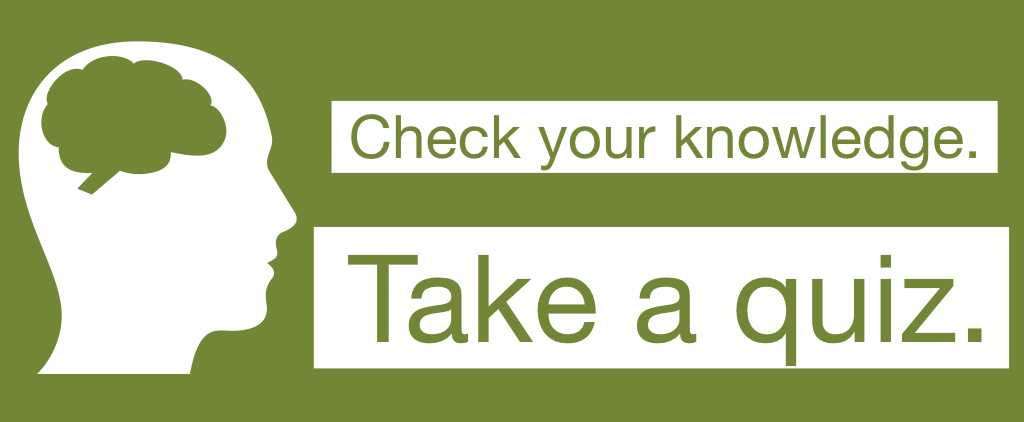
Premium Resources
Please support internet geography.
If you've found the resources on this page useful please consider making a secure donation via PayPal to support the development of the site. The site is self-funded and your support is really appreciated.
Related Topics
Use the images below to explore related GeoTopics.
Previous Topic Page
Topic home, next topic page, share this:.
- Click to share on Twitter (Opens in new window)
- Click to share on Facebook (Opens in new window)
- Click to share on Pinterest (Opens in new window)
- Click to email a link to a friend (Opens in new window)
- Click to share on WhatsApp (Opens in new window)
- Click to print (Opens in new window)
If you've found the resources on this site useful please consider making a secure donation via PayPal to support the development of the site. The site is self-funded and your support is really appreciated.
Search Internet Geography
Top posts and pages.
Latest Blog Entries
Pin It on Pinterest
- Click to share
- Print Friendly

IMAGES
VIDEO
COMMENTS
The tsunami in 2011 claimed the lives of 15,853 people and injured 6023. The majority of the victims were over the age of 60 (66%). 90% of the deaths was caused by drowning. The remaining 10% died as the result of being crushed in buildings or being burnt. 3282 people were reported missing, presumed dead.
Location: The earthquake struck 250 miles off the northeastern coast of Japan's Honshu Island at 2:46 pm (local time) on March 11, 2011. Japan 2011 Earthquake map. Magnitude: It measured 9.1 on the Moment Magnitude scale, making it one of the most powerful earthquakes ever recorded. Japan is a highly developed country with advanced ...
What were the primary effects of the 2011 Japan earthquake? Impacts on people. Death and injury - Some 15,894 people died, and 26,152 people were injured. 130,927 people were displaced, and 2,562 remain missing. Damage - 332,395 buildings, 2,126 roads, 56 bridges and 26 railways were destroyed or damaged. 300 hospitals were damaged, and 11 ...
Case study: Japan tsunami 2011 (HIC) On Friday 11 March 2011 at 14:46:24, an earthquake of magnitude nine on the Richter scale close Richter scale The measure by which the strength of earthquakes ...
within 2 metres of sea level. The tsunami Powerful as the earthquake's immediate impact was, its overwhelming effect was the creation of a devastating tsunami on Japan's north-east coast. A six metre upward surge of the seabed at the epicentre set up a wave that travelled at 800 km/h across the Pacific and westwards to Japan.
Here I have put all the case studies figures into one document because over the two separate ... Japan 2011 Tsunami - Caused by the 9 magnitude earthquake on the 11 th March, the reason for that quake was because of build-up in strain energy as the Pacific plate subducted under the
This level of event is not unusual, but, on this occasion, the knock-on effects were particularly serious, as the push of the Pacific plate as it went under Japan put extra strain on an area of existing pressure build-up along the margin. This led directly to a 480-km stretch of the Pacific plate breaking free and surging underneath Japan.
Causes. There was a magnitude 9.0 earthquake east of Sendai, under the sea in the north-west Pacific Ocean. This earthquake took place on a subduction zone between the Pacific and Eurasian tectonic plates. Within 45 minutes, a tsunami between 10 and 20 m high struck the eastern coast of Japan. In some places, the tsunami was 40 m high and ...
A tsunami reaches Miyako City, overtopping seawalls and flooding streets in Iwate Prefecture, Japan, after the magnitude 9.0 earthquake struck the area March 11, 2011. The waves, a staggering 10 m in heigh overwhelmed the tsunami defence walls and surged up to 10km inland. When did it happen. Magnitude 9.0 earthquake struck the area March 11, 2011.
Japan earthquake and nuclear crisis case study (MEDC) Learn with flashcards, games, and more — for free. ... Create. Study sets, textbooks, questions. Log in. Sign up. Upgrade to remove ads. Only $35.99/year. A-Level Geography: Japan Earthquake, Tsunami and Nuclear Crisis 2011. Flashcards. Learn. Test. Match. Flashcards. Learn. Test. Match ...
A Level Geography Japan Earthquake Case Study. Flashcards. Learn. ... Tokyo's nuclear plant Fukushima - 3 of the 6 reactors stopped working - power station was inundated by the tsunami - 80,000 people in a 12 mile radius of the nuclear plant had ... A Level Geography Hurricane Harvey Case Study. 11 terms. saskiafilbee. Other sets by this ...
Title: Asian Tsunami 2004 - Case Study - World at Risk - Edexcel Geography IAL Created Date: 20191125163819Z
The earthquake and tsunami also caused extensive and severe structural damage in north-eastern Japan, including heavy damage to roads and railways as well as fires in many areas, and a dam collapse. Around 4.4 million households in northeastern Japan were left without electricity and 1.5 million without water.
Included is 6 case studies made for the hazardous earth topic of the A-Level Geography OCR specification. The six case studies include: - Chile Earthquake 2010 - China Earthquake 2008 - Haiti Earthquake 2010 - Iceland Volcanic eruption 2010 - Japan Earthquake and Tsunami 2011 - Mount Etna Eruption 2002 Each case study covers elements which ...
https://goo.gl/2aDKGz to access super concise & engaging A-level videos by A* students for the AQA, OCR and Edexcel Specs.
CASE STUDY: TOHOKU, JAPAN (MEDC) 11th March, 2011. 9.0 on the Richter scale. 100km east of Sendai. 3000km of coastline affected. Lasted 6 mintues, plus couple of afterschocks. Causes: Destructive plate margin where the Pacific plate was being subducted by the North Amercian. A segment of rock around 200km long slipped and flicked upwards by 10m.
AQA A-Level Geography - Tohoku, Japan Case Study. Flashcards. Learn. Test. Match. Flashcards. Learn. Test. Match. Created by. Gnoblinslap. Terms in this set (27) When was the Tohoku Earthquake? March 2011. ... The tsunami reached Sendai airport, which is how far away from the coast? 1 mile.
Long-term impact and response. Economists estimate that the total damage done by the earthquake and tsunami is $200 bn. This is the largest amount of damage caused by any natural disaster ever. Japan was a high income country and had a new tsunami warning system. But, studies suggest that only 58% paid any attention to the tsunami warning.
On the 11th March 2011, a 9.0 magnitude earthquake. struck 70km from the coast of Sendai Bay, severely affecting the region of Tohoku and the city of Sendai. The earthquake was the most powerful recorded earthquake in Japan's history and was the costliest natural disaster in history. A huge tsunami followed the earthquake, devastating the ...
A-Level Japan Earthquake/Tsunami Case Study. Subject: Geography. Age range: 16+. Resource type: Assessment and revision. File previews. docx, 17.05 KB. Full of Facts, Causes, Impacts and Responses! Can be used for short, long and essay questions! Great for Teachers and Students!
On Friday 28th September 2018 a magnitude 7.5 earthquake struck Palu, on the Indonesian island of Sulawesi, just before dusk wreaking havoc and destruction across the city and triggering a deadly tsunami on its coast. The 7.5 magnitude earthquake hit only six miles from the country's coast. A map to show the location of Palu.
Water case studies a level edexcel geography. 15 terms. georgia2906. Preview. Edexcel IGCSE Biology Sub topic 2 - Variety of living organisms (1.2,1.3,1.4) ... East of Sendia, under sea in North-West Pacific, subduction zone between Pacific + Eurasian plates - 45 min --> 10 - 20m tsunami struck eastern Japan up to 20km inland, the tsunami was ...
The earthquake occurred at 18.457°N, 72.533°W. The epicentre was near the town of Léogâne, Ouest department, approximately 25 kilometres (16 mi) west of Port-au-Prince, Haiti's capital. The earthquake's focus was 13km (8.1 miles) below the Earth's surface. Why?